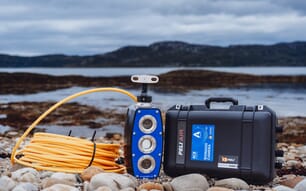 Considerable thought and planning should go into selecting sites for commercial fish production ponds. Construction costs, ease and cost of operation, and productivity can be greatly affected by the site selected.
Considerable thought and planning should go into selecting sites for commercial fish production ponds. Construction costs, ease and cost of operation, and productivity can be greatly affected by the site selected.
Selection of pond sites on flat land would seem to be a simple matter but many factors are involved. These alternatives must be considered, or you may find the cost and problems associated with production prohibitive with respect to profits.
Water availability
Water for filling levee-type ponds must come from a well, spring, reservoir or stream since there is no watershed for runoff water to enter the pond. Thus, one of the first considerations
in selecting a site for commercial fish ponds is to make sure that an adequate supply of
suitable quality water is available for the size farm planned.
Usually one well with a capacity of 2,000 to 3,000 gallons per minute (gpm) is adequate for four 20-acre ponds, or a minimum of 25 gpm per acre of pond surface. There must be enough water available to fill the pond completely within 10 days, otherwise problems with vegetation
and water quality management will occur. Table 1 gives the time required to pump different volumes of water at different pumping rates.
A local well drilling company, a ground water geologist, or the closest office of the U.S. Geological Survey should be able to tell you if a well of the desired capacity can be developed at the site. Information on the quality of ground water at the site should be available from the
U.S. Geological Survey or local ground water geologist.
Water sources
Water for levee ponds for commercial fish production can come from a well, spring, stream or reservoir. Of the four choices, a well is usually the best for several reasons. A spring is almost as good. Streams and reservoirs should be used only as last resorts because they usually contain
various species of wild fish that can get into the pond and cause severe management problems.
Streams and reservoirs can also become contaminated with pesticides or industrial chemicals that could kill fish. During droughts water levels become so low in the streams and reservoirs that they can no longer be used as sources of needed pond water. Wild fish in streams and reservoirs
serve as constant sources of reinfection with various infectious diseases. The quality of water in
streams and reservoirs can change enough during droughts or floods as to be unusable at those times.
If a stream or reservoir must be used as a source of water for commercial fish ponds, be aware of potential problems. Appropriate actions may need to be taken to avoid fish loss or additional expenditure of funds.
Soil characteristics
The soil must hold water, so claytype soils are desirable. Take soil cores at various places around the site to insure adequate clay is present to prevent excess seepage. The local Soil Conservation Service Office can assist you. Ponds can be built in soils that have high percolation rates if they are lined with a layer of packed clay or plastic, but costs are almost prohibitive.
Topography
The topography or lay-of-the-land determines the amount of dirt that has to be moved during pond construction. Pond construction on flat land requires less dirt moving than building on rolling or hilly land. Levee-type ponds built on flat land usually require about 1,100 to 1,200 yards of dirt to be moved per acre, although the actual amount of dirt that must be moved can vary greatly from this figure.
Wetlands
Before selecting the site be sure the land is not classified as a wetland. A permit is required from the Corps of Engineers before clearing or building on wetlands. In some states, particularly Florida, permits are needed from one or more state agencies before any clearing or building can take place on wetlands. Wetlands are defined as: Those areas that are inundated or saturated by surface or ground water at a frequency and duration to support, and that under normal conditions do support, a prevalence of vegetation typically adapted for life in saturated soil conditions. Wetlands generally include swamps, marshes, bogs and similar areas.
Draining
For management purposes and for harvesting you must be able to drain the ponds, and the site should be selected with this in mind. You must be able to drain the ponds by gravity flow, and insure that draining your prods will not cause flooding on a neighbors land or block the drainage from a neighbors land.
Flooding
Make sure the site under consideration is not subject to periodic flooding. This can be done by checking with the local U.S. Geological Survey Office or Soil Conservation Service Office.
Utility right-of-ways
Before building ponds over pipe lines or under power lines, check locations of right-of-ways with the utility company first to avoid possible legal problems later.
Pesticides
Check the soil for pesticide residues if row crops were ever grown on or adjacent to the site being considered. There are three areas within a site that must be checked for pesticide residue levels. These are:
- low areas where run-off collects;
- any area where spray equipment,
- either aerial or ground, was filled with pesticides; and
- any area in the site where pesticides were disposed of or were stored.
Chlorinated hydrocarbon pesticides-- particularly toxaphene which was widely used in the past as an insecticide in row crop farming--are long lasting in the soil. High soil concentrations
of toxaphene in ponds can harm fish either through direct, acute toxicity or by chronic toxicity
due to bioaccumulation. Observation seems to indicate that soil concentrations in excess of 0.5 parts per million (ppm) or milligrams per liter (mg/l) can be harmful to fish. Most chlorinated hydrocarbon pesticides are tied up in the top 2 to4 inches of soil, depending on the type of farming practices used.
Samples for analysis should be taken at a depth not to exceed 4 inches. If the top layer of soil contains high levels of pesticides while the soil deeper than 4 inches is pesticide free, the top layer of contaminated soil can be moved off and incorporated in the
outside levees only. Do not use the contaminated soil in outside levees if planned expansion will utilize these outside levees as future inside levees.
Analysis of soils for pesticide residues can be done by commercial analytical laboratories
or, in some states, by your State Chemical Laboratory. Check with your local county Extension
agent to see if a state agency offers this service.
Source: Southern Regional Agricultural Center and the Texas Aquaculture Extension Service - November 1988




